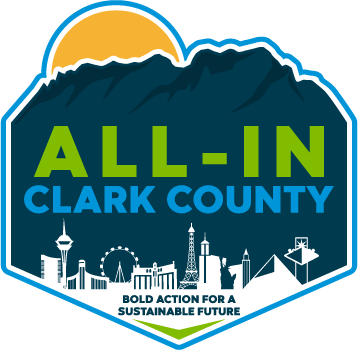Leading by Example
Community-Based Solar Projects
In 2019, the Nevada Legislature passed a law to expand solar energy to low-income customers without requiring them to install their own solar systems. In response, NV Energy recently launched the Expanded Solar Access Program to support community-based solar projects. At the Program’s full capacity, the Expanded Solar Access Program has the potential to serve more than 8,700 low-income households and more than 15,000 households that would otherwise be unable to install solar panels due to rental agreements or space constraints.
Energy and Climate
Connections to Climate Change
Investing in and producing more renewable energy will reduce GHG emissions. At the same time, we need to strengthen the electric grid against the impacts of climate change which threaten to disrupt energy delivery and increase energy bills. Extreme weather events, particularly heat waves, stress the electricity grid and elevate the risk of brownouts. Flash flooding and high winds also pose risks to power lines and other energy infrastructure. These issues can be addressed through strategies that include creating more connections to regional clean energy supplies, making the grid "smarter," and leveraging energy storage opportunities.
Our Pathway to a Clean Energy Future
Explore the goals, strategies, and actions in the All-In Community Plan. Use the dropdown table to see the progress we've made towards implementing each action!
| Action | Description | Status |
1.1.A | Advocate to increase the State Renewable Portfolio Standard to attain 100% renewable electricity by 2050. | |
1.1.B | Accelerate development of medium, neighborhood-scale solar through model projects, tools, and design standards. | |
1.1.C | Support legislation allowing more utility collaboration for research and development of renewable fuels in Nevada. |
| Action | Description | Status |
1.2.A | Expand Community Solar programs to deliver shade and other resilience benefits equitably across communities in Clark County. | |
1.2.B | Pursue finance mechanisms in a “program stacking” model to reduce costs for households and new commercial and residential developments. | |
1.2.C | Advocate for utility regulation that aligns incentives with the accurate value of grid services provided by distributed solar and storage. |
| Action | Description | Status |
2.1.A | Support and expand the NV Energy advanced notification system for outages to include agencies managing critical assets. | |
2.1.B | Review and regularly communicate status, impact, and cost of disruptions to critical assets. |
| Action | Description | Status |
2.2.A | Engage regulators to expedite research, assessment, and approval of new storage and integration technologies. |
Are You All-In?
Support an Efficient & Resilient Energy Future
You can help us go All-In to reduce energy consumption and increase reliance on renewables. Here are some key steps to take.


